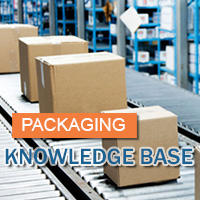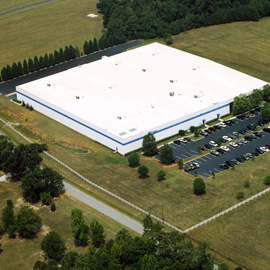Common Tape Adhesives and Backings
 The final steps of preparing your product tosendto a customer are always exciting. You get to place the items you worked so hard on developing into afresh newbox, wheretheyll rest alongside protectivevoid fill until they reach their final destination. At that point, an excited buyer will open the box to find the goods theyve been waitingso longto receive. But if your box falls apart or breaks open during the shipping process,your customer will be incredibly disappointed. Not only that, but youll also end up on the hook for repairs, replacements, and more. Thankfully, we can help you with those final steps of thepackaging and shipping process with this guide to the most common tape adhesives and backings. This will give you a great understanding of the different types of packaging tape and the most suitable applications for each of them including your own cartons and boxes.
The final steps of preparing your product tosendto a customer are always exciting. You get to place the items you worked so hard on developing into afresh newbox, wheretheyll rest alongside protectivevoid fill until they reach their final destination. At that point, an excited buyer will open the box to find the goods theyve been waitingso longto receive. But if your box falls apart or breaks open during the shipping process,your customer will be incredibly disappointed. Not only that, but youll also end up on the hook for repairs, replacements, and more. Thankfully, we can help you with those final steps of thepackaging and shipping process with this guide to the most common tape adhesives and backings. This will give you a great understanding of the different types of packaging tape and the most suitable applications for each of them including your own cartons and boxes.
Common Tape Adhesives
Acrylic: Acrylic tapesdo not need tobeprepared in advance in order to apply them. They provide good peel strength and will offer their maximum amount of adherence the moment they are applied to a carton. Hot Melt: In order toplacehot melt tapes, which are sometimes called heat-activated tapes, heat must be applied to the adhesive. The heat causes it to soften and stick to the surface of a carton. When extra heat is applied, the user can remove the tape from the surface to which it was initially placed.
Non-Adhesive:You might have already guessed from the name, but non-adhesive tapes actually dont have any adhesive. They are self-adhering and require significant amounts of frictionto stay that way.
Pressure Sensitive: This is another variety of tape that is fairlyself-explanatory. Sometimes called PSAs, pressure sensitive adhesives offer a high amount of tack or stick indry, room temperature settings.All the operator must do in order to make sure the tape attaches to the surface isapplypressure with their hand. Pressure sensitive tapes can stick to a wide variety of substances, are veryelastic, and dont leave residue behind when removed.
Rubber:Rubber based tape adhesives are equipped with a chemical makeup that allows for incredibly flexible bonds. This means they can adhere well to structures with odd angles or edges.
Silicone: Like rubber adhesives, silicone adhesives have impressive flexibility. They also work well in extreme heat, as they can resist temperatures as high as 600-degrees F. Some silicone tapes are pressure sensitive, while others need to be ventilated or exposed to UV or EBradiationin order to stick.
Water Activated: As the name implies, water-activated tapes must be wetted in order to adhere to various surfaces.The adhesive itself is composed of a starch or glue thats placed onto reinforced paper. Once the tape is wetted and applied, it will dry and form ahigh-strength bond to the carton.
Hot Melt: In order toplacehot melt tapes, which are sometimes called heat-activated tapes, heat must be applied to the adhesive. The heat causes it to soften and stick to the surface of a carton. When extra heat is applied, the user can remove the tape from the surface to which it was initially placed.
Non-Adhesive:You might have already guessed from the name, but non-adhesive tapes actually dont have any adhesive. They are self-adhering and require significant amounts of frictionto stay that way.
Pressure Sensitive: This is another variety of tape that is fairlyself-explanatory. Sometimes called PSAs, pressure sensitive adhesives offer a high amount of tack or stick indry, room temperature settings.All the operator must do in order to make sure the tape attaches to the surface isapplypressure with their hand. Pressure sensitive tapes can stick to a wide variety of substances, are veryelastic, and dont leave residue behind when removed.
Rubber:Rubber based tape adhesives are equipped with a chemical makeup that allows for incredibly flexible bonds. This means they can adhere well to structures with odd angles or edges.
Silicone: Like rubber adhesives, silicone adhesives have impressive flexibility. They also work well in extreme heat, as they can resist temperatures as high as 600-degrees F. Some silicone tapes are pressure sensitive, while others need to be ventilated or exposed to UV or EBradiationin order to stick.
Water Activated: As the name implies, water-activated tapes must be wetted in order to adhere to various surfaces.The adhesive itself is composed of a starch or glue thats placed onto reinforced paper. Once the tape is wetted and applied, it will dry and form ahigh-strength bond to the carton.
Common Tape Backings
Acrylic and Acrylate:Acrylic backings are made up from thermoplastic films. These backings usually offer high clarity and do not fade when exposed to UV radiation. Cloth: Certain cloth fabric materials, such as cotton, can be used as tape backing for adhesives that require high tensile strength and impressive resistance to heat and electricity. Sometimes cloth tape backing is reinforced with glass or fiberglass particles to improve the adhesives heat resistance even further up to 300-degrees F in some cases. Foam:Foam tapes generally come with a liner that protects the adhesive. This liner is usually a tape, film, or laminate. Metal Foil: Adhesives with metal foil backings are very reflective and resistant to heat. Most often, they include aluminum or aluminum-reinforcedbackings. PET and Polyester: These backings offer impressive resistance to chemical solvents. They tend to age well and are easy to see through.
Paper: Paper-backed tapes are best for shorter applications and are not intended for long-term use.
Rubber:Most tapes that are equipped with rubber backings are self-adhering. They often provide water-tightseals, butmay be susceptible to damage or impairment when exposed to chemicals.
Silicone:Siliconebacked tapes give the user a tightbondthat is resistant to moisture, making them a great choice for electrical insulation use, especially splicing and stress cones.
Vinyl and PVC: When paired with a vinyl backing, an adhesive receives improved resistance to natural or chemical interferences and becomes more flexible.
PET and Polyester: These backings offer impressive resistance to chemical solvents. They tend to age well and are easy to see through.
Paper: Paper-backed tapes are best for shorter applications and are not intended for long-term use.
Rubber:Most tapes that are equipped with rubber backings are self-adhering. They often provide water-tightseals, butmay be susceptible to damage or impairment when exposed to chemicals.
Silicone:Siliconebacked tapes give the user a tightbondthat is resistant to moisture, making them a great choice for electrical insulation use, especially splicing and stress cones.
Vinyl and PVC: When paired with a vinyl backing, an adhesive receives improved resistance to natural or chemical interferences and becomes more flexible.
Need More?
If youre ready to get started with the ideal tape, tape adhesives, or tape backings for your project, its time to give us a call. Our team will even help out if youre still not totally certain which tape you need. Give us a shout at 1-877-410-1146. We cant wait to hear from you!Read Related Articles
Get A Free Quote / Need Help ?
Contact Us




